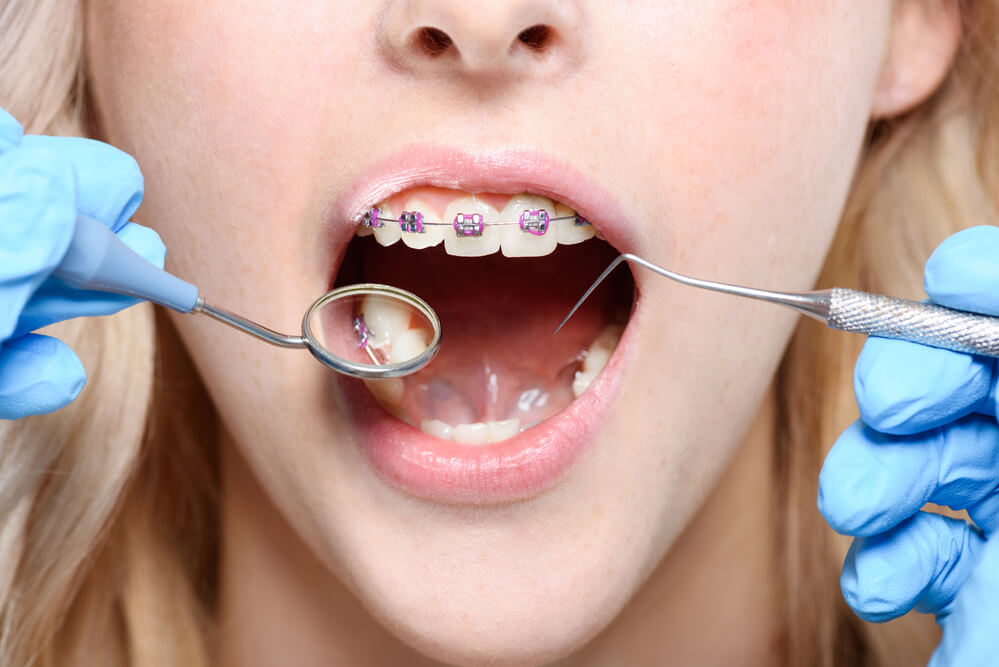
Can You Wear Braces with Baby Teeth
Are your child’s teeth crooked? Is the dentist suggesting that they need braces? Only, your child still has their baby teeth? Is it okay for a child to get braces while they still have baby teeth? According to Align Beauty Orthodontics, an experienced orthodontist in Dublin, Ohio, you might want to hold off on those braces for a few more years. In this article, you will learn the pros and cons of getting braces if your child still has baby teeth.
Why Do We Need Braces?
The first advice kids need to know is that braces make your smile better. Don’t pay attention to the negative portrayal of braces in the media. Braces are needed for a number of important reasons. Crowding, crooked teeth, overlapping, over-bites or under-bites are all reasons for needing braces.
According to MD, Larissa Hirsch, if you don’t get braces, these lingering issues cause serious tooth decay, gum disease, tooth loss and abnormal wear on the enamel.
Why Should I Take My Child to an Orthodontist at the Age of 7?
As your baby teeth fall out, the adult teeth start growing in. Permanent teeth grow in around the age of seven. As the adult teeth are starting to grow in, baby teeth are falling out at the same time.
According to Robert Williams on Braces for Young Kids Might Not Always Be Best, Williams estimates that you’re better off waiting until the permanent teeth have come in first before the treatment starts, according to studies. Otherwise, your teeth will be the result of many common problems.
Meeting With an Orthodontist
During a normal check-up with an orthodontist, the orthodontist examines your child’s teeth, mouth, followed by a series of X-rays. After other experiments, the orthodontist decides the need for braces based on the shape of the child’s teeth, along with how crowded the mouth is.
Another task the orthodontist will do, is press your child’s teeth into a gooey material that will allow them to see how their teeth are set up in alignment. By making sure that the upper and lower jawbones are in alignment, there is more of a chance regarding tooth crowding.
Yes, sort of like unwanted visitors moving into your mouth and crowding the apartments that are already there.
As some sources and orthodontists have pointed out in studies, it’s easier to treat kids when they’re younger. It’s a shorter treatment plan. The orthodontist can set up a treatment plan to wait for more permanent teeth to grow in. If certain baby teeth are clinging to your mouth, the orthodontist can remove them to begin the process faster.
The Interceptive Approach
According to Thomas J. Salinas, D.D.S, some orthodontists recommend what’s called an interceptive approach. An Interceptive approach involves using dental appliances at an earlier age, while a child still has baby teeth.
Then, when a child has mainly adult teeth, the second phase of treatment is started, usually involving dental braces. Waiting to get braces is deemed by some as a shorter process than an early process of braces.
Since every orthodontist has differing opinions on the timeline for braces orthodontists believe that the permanent teeth should grow in with the use of dental appliances before the second phase of treatment makes correction easier. Therefore, it’s easier to acquire braces at a young age and not as an adult.
Early Treatment vs. Later Treatment
If issues, such as cross-bites or overcrowding, are left untreated too long, the issue can complicate the treatment making the treatment longer. As some sources and orthodontists have pointed out in studies, it’s easier to treat kids when they’re younger. It’s a shorter treatment plan.
If it’s still too early to tell whether you need braces in the later future, keep setting up appointments. A lot of harm falls on your teeth if you wait too long.
In other words, early treatment of braces allows for the correct mounting of space in the mouth for the incoming adult teeth so that when the teeth grow in, they have room to be in the proper place. That way, all the neighbors are happy with living conditions and have their needed space.
Conclusion
In the long run, it’s best that all the baby teeth have fallen out before getting braces. Of course, you can see an orthodontist to get their opinion before making your decisions. It’s best to get a recommendation early and not never.
Although braces are a pain and get in the way, think of the value of your smile. A smile is better than a frown.
Set up an appointment with an orthodontist now. If your child needs braces, work won’t be done to their teeth until later on. Make your smile beautiful.
The best choice for you and your child mainly depends on how bad your child’s dental problems are. Talk with your child’s dentist or orthodontist and from there you’ll know how the road ahead will look.

